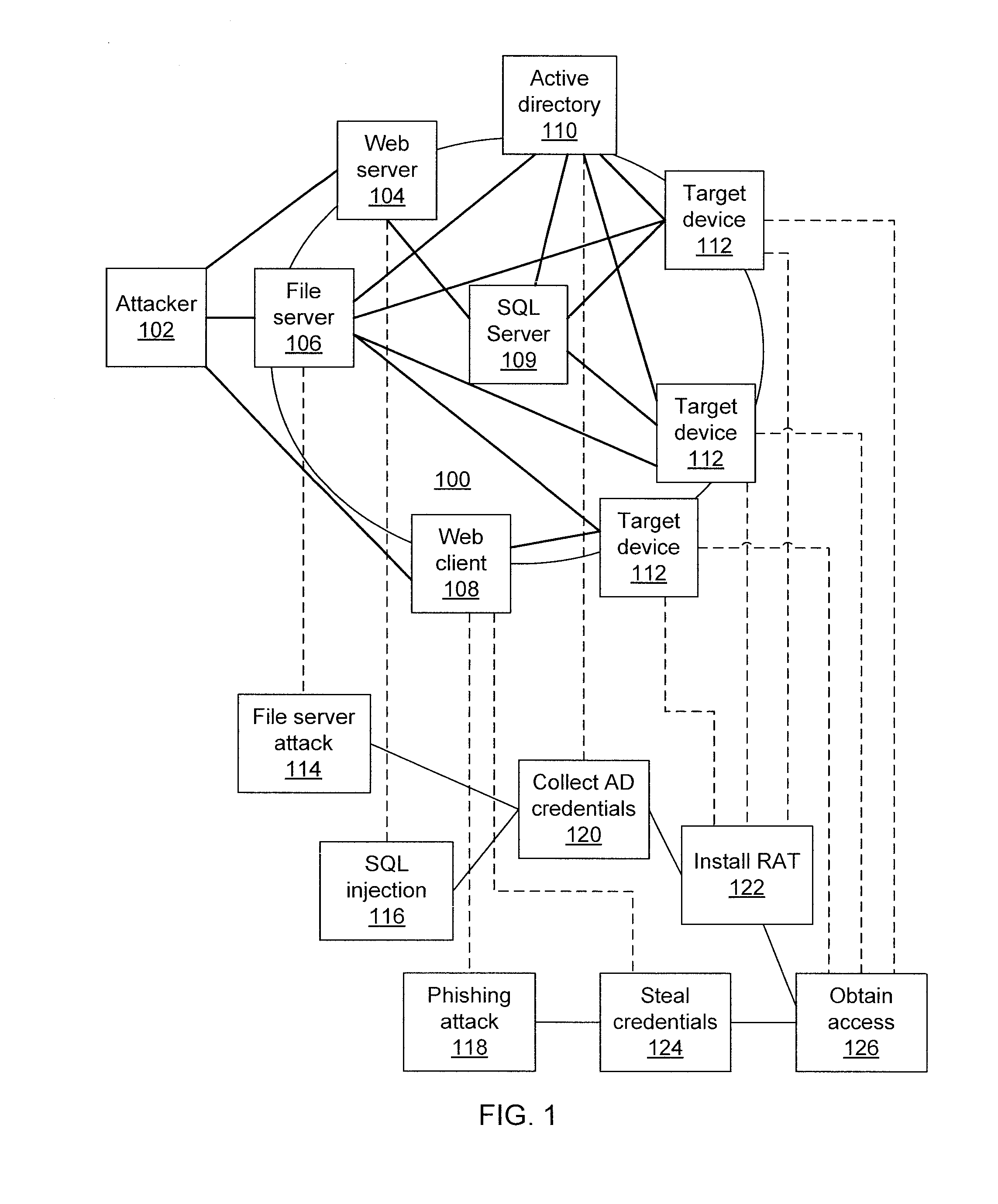Predicting attacks based on probabilistic game-theory
a probabilistic game theory and attack prediction technology, applied in the field of computer security, can solve the problems of inability to determine the goal of a targeted attacker and respond appropriately, detection and response systems do not provide adequate insight to system operators, and existing approaches that assume a small target set are impractical to use, so as to minimize the expected uncertainty of potential targets for defenders
- Summary
- Abstract
- Description
- Claims
- Application Information
AI Technical Summary
Benefits of technology
Problems solved by technology
Method used
Image
Examples
Embodiment Construction
[0020]The present principles employ game theory to predict attacker targets. Using a probabilistic model of attacker behavior, the interactions between a network defender and attacker are modeled, allowing the defender to anticipate future steps of the attack and identify the most likely attack targets based on the observed network events. The present principles use attack scenario trees which represent the possible sequences of high-level attack steps that can be executed at different nodes of the network. This approach differs from the attack-response trees used previously, which represent attack steps within a single network host. Attack scenario trees can be constructed based on past incident reports.
[0021]The interaction between the defender and the attacker is modeled as a two-player Stackelberg game. The defender can use the model to further decrease uncertainty about attack target predictions by blocking specific network paths (and indirectly any attack steps that traverse t...
PUM
 Login to View More
Login to View More Abstract
Description
Claims
Application Information
 Login to View More
Login to View More - R&D
- Intellectual Property
- Life Sciences
- Materials
- Tech Scout
- Unparalleled Data Quality
- Higher Quality Content
- 60% Fewer Hallucinations
Browse by: Latest US Patents, China's latest patents, Technical Efficacy Thesaurus, Application Domain, Technology Topic, Popular Technical Reports.
© 2025 PatSnap. All rights reserved.Legal|Privacy policy|Modern Slavery Act Transparency Statement|Sitemap|About US| Contact US: help@patsnap.com



